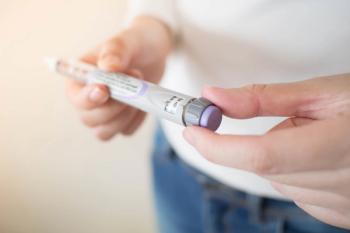
Risk of Adverse Pregnancy Outcomes Increases With Hepatitis B, Gestational Diabetes
Hepatitis B and liver functions have been found to be independent risk factors for gestational diabetes and are found to have the highest prevalence of abnormalities.
The risk of adverse pregnancy outcomes for women with hepatitis B virus and gestational diabetes increased with maternal age and gravidity, according to a study published in BMC Pregnancy and Childbirth.1
“The 2 conditions interact through mechanisms such as insulin resistance and inflammatory responses. Our study found that the incidences of HBVC, GDM and HBVC & GDM in Hangzhou, China were 4.97% (95% CI: 4.84–5.10%), 0.83% (95% CI: 0.7–0.88%) and 0.96% (95% CI: 0.90–1.02%), respectively,” the study authors said.1
Hepatitis B surface antigens and liver functions have been found to be independent risk factors for gestational diabetes and are found to have the highest prevalence of abnormalities. The investigators of a study published in Frontiers in Physiology showed that, regardless of liver status, hepatitis B is an independent factor of gestational diabetes pathogenesis.2
In another study published in Diabetes Research and Clinical Practice, maternal hepatitis B and gestational diabetes are independently associated with adverse perinatal outcomes, including femur length growth, placental abruption, and macrosomia. Patients in the study had hepatitis B, gestational diabetes, or both, and investigators included patients with neither as a control comparison.3
Investigators of the current study conducted a retrospective cohort study to investigate the impact of concomitant gestational diabetes on pregnancy outcomes for pregnant women with hepatitis B. Medical records of women from 3 tertiary hospitals in Hangzhou, China, were included from January 2015 to December 2022. Patient information included name, age, gravidity, parity, diagnosis at discharge, and neonatal demographic information. Investigators included 12,815 pregnant women, with 5323 patients who did not have hepatitis B or gestational diabetes, 5508 who had hepatitis B alone, 919 who had gestational diabetes alone, and 1065 who had both.1
The median maternal age for patients with hepatitis B and gestational diabetes was higher than the individual groups or the control group, according to the investigators. As for neonatal populations, there were more patients born with low birth weight and macrosomia in the hepatitis B and gestational diabetes group compared with the control group and the individual groups.1
Additionally, the investigators found that the risk values increased with increasing maternal age in the hepatitis B, gestational diabetes, and combined groups. Patients who had both and were 35 years or older had a 2-fold higher risk of carriage than in the individual groups, according to the study authors. Further, in the hepatitis B group and combined group, patients had higher risk values with increasing gravidity.1
Investigators also found that the combined group had an increased risk of intrahepatic cholestasis of pregnancy (ICP), macrosomia, and cesarean section (C-section). However, the study authors also noted that the combined group had a reduced risk of gestational age of more than 41 weeks. The hepatitis B group had an increased risk of ICP, uterine scar, and prenatal anemia, but they also had a reduced risk of hyperlipidemia, premature rupture of membranes, and C-section.1
Lastly, patients with gestational diabetes alone had a gestational age at delivery of less than 34 weeks, hyperlipidemia, antepartum hemorrhage, pre-eclampsia (PE), gestational hypertension, and gestational age at delivery between 34 and 36 weeks. However, they also had a reduced risk of gestational age of more than 41 weeks and antepartum anemia, according to the study authors.1
“When HBVC [hepatitis B] & GDM [gestational diabetes] co-existed, the risks of ICP, PE and macrosomia were increased significantly,” the study authors said.1 “The risks of HBVC, GDM, and HBVC & GDM increased with advancing maternal age. The risk of HBVC and HBVC & GDM increased with increasing gravidity.”
READ MORE:
Ready to impress your pharmacy colleagues with the latest drug information, industry trends, and patient care tips? Sign up today for our
REFERENCES
1. Wang L, Sheng H, Jiang C, Chen Y. The impact of gestational diabetes mellitus on pregnancy outcomes in women with hepatitis B virus: a retrospective cohort study. BMC Pregnancy Childbirth. 2025;25(1):659. Published 2025 Jun 7. doi:10.1186/s12884-025-07719-5
2. Zhao M, Yang S, Su X, Hung TC, Liu Y, Zheng W. Hepatitis B Virus Infection and Increased Risk of Gestational Diabetes Regardless of Liver Function Status: A Xiamen Area Population-Based Study. Front Physiol. 2022;13:938149. Published 2022 Jul 11. doi:10.3389/fphys.2022.938149
3. Tu Y, Li Y, Fan X, et al. Combined impact of Hepatitis B virus and gestational diabetes mellitus on ultrasound-measured fetal growth and adverse perinatal outcomes: A seven-year retrospective study. Diabetes Res Clin Pract. 2024;207:111092. doi:10.1016/j.diabres.2024.111092
Newsletter
Pharmacy practice is always changing. Stay ahead of the curve with the Drug Topics newsletter and get the latest drug information, industry trends, and patient care tips.























































































































